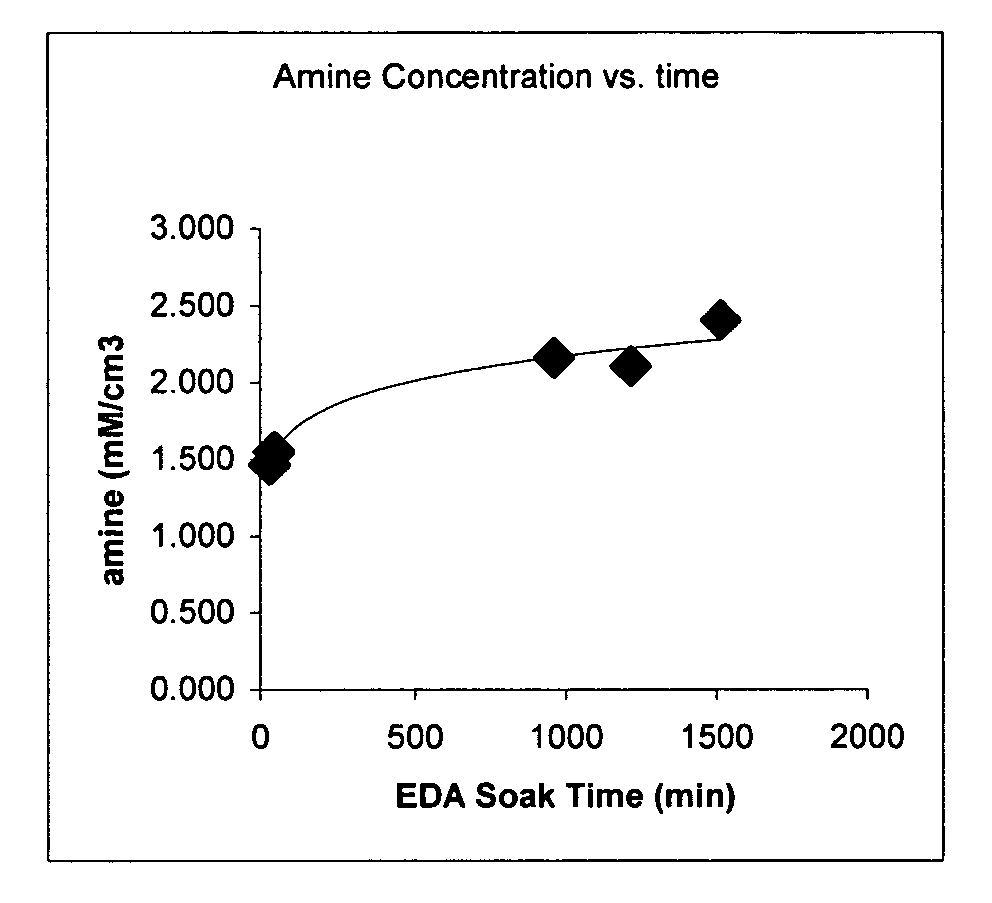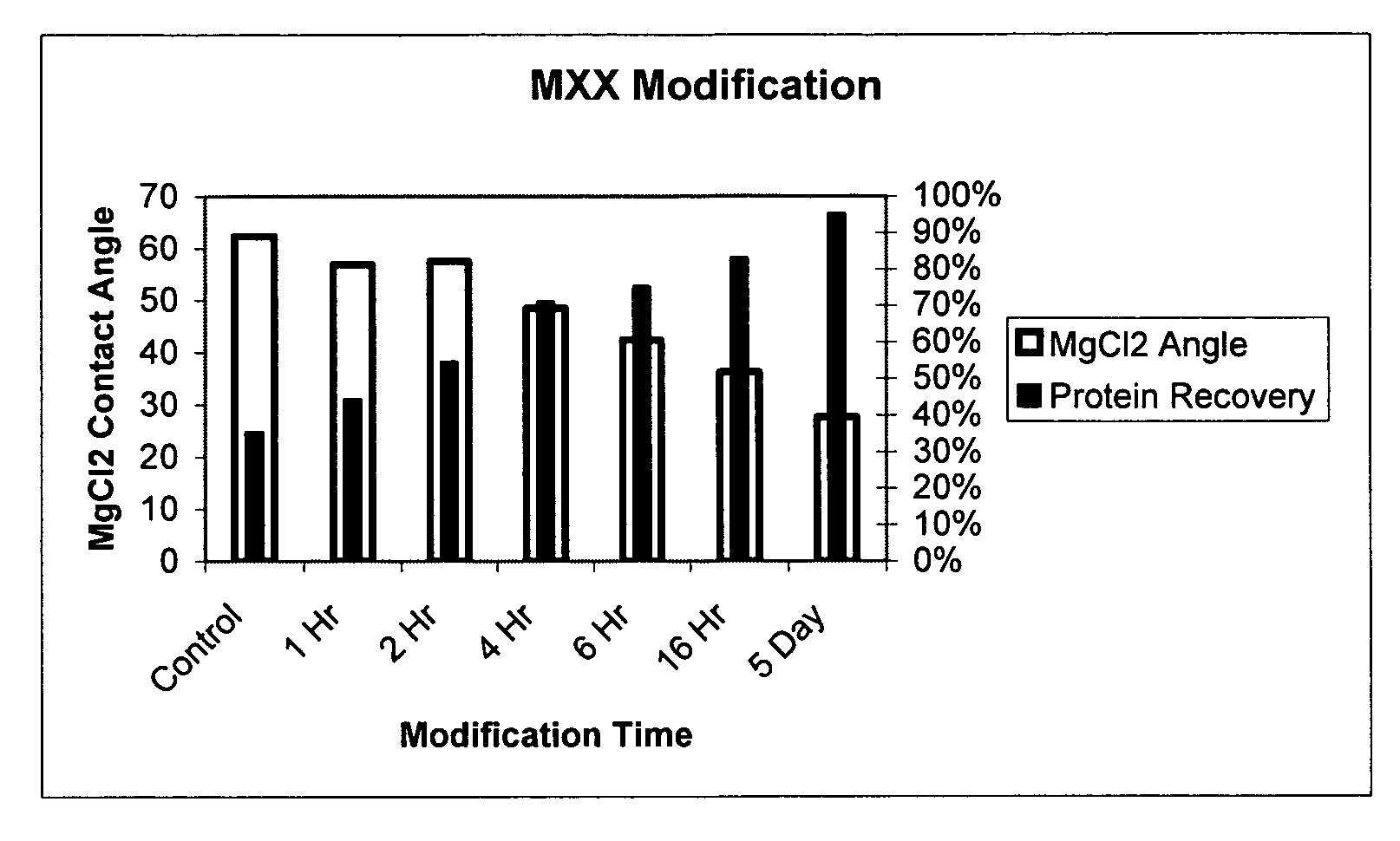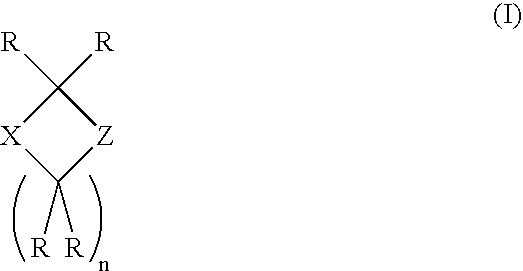Surface modified polymer matrices and methods for their preparation
a polymer matrice and surface modification technology, applied in the field of surface modified polymer matrices and methods for their preparation, can solve the problem of limited application of many polymer materials
- Summary
- Abstract
- Description
- Claims
- Application Information
AI Technical Summary
Benefits of technology
Problems solved by technology
Method used
Image
Examples
example 1
[0076] A porous polyacrylonitrile membrane (50 microns thick, surface energy 40.4 dynes / cm2) was immersed in a solution of dioxolane (7.5 parts) in sulfuric acid (24.5 parts) / acetic acid (68 parts) at 60° C. for 1 hour. The modified membrane thus prepared then was rinsed with copious amounts of DI water at which point the surface energy had increased to 65.8 dynes / cm2.
example 2
[0077] The modified membrane was soaked in ethanol and dried under vacuum for 24 hours. The modified membrane then was treated with a solution of nitrobenzylsulfonyl chloride (5.75 parts) and pyridine (2.5 parts) in acetone (91.75 parts) for 5 hours, followed by rinsing in acetone, which resulted in an activated membrane.
example 3
[0078] The activated membrane was treated with ethylenediamine (10 parts) in isopropyl alcohol for 16 hours. When rinsed, a ninhydrin analysis was performed to quantify the number of pendant amine groups which were bound to the matrix. Approximately 2.16 mM of amine groups per cm3 of matrix were found to have added to the membrane.
PUM
| Property | Measurement | Unit |
|---|---|---|
| diameter | aaaaa | aaaaa |
| diameter | aaaaa | aaaaa |
| thickness | aaaaa | aaaaa |
Abstract
Description
Claims
Application Information
 Login to View More
Login to View More - R&D
- Intellectual Property
- Life Sciences
- Materials
- Tech Scout
- Unparalleled Data Quality
- Higher Quality Content
- 60% Fewer Hallucinations
Browse by: Latest US Patents, China's latest patents, Technical Efficacy Thesaurus, Application Domain, Technology Topic, Popular Technical Reports.
© 2025 PatSnap. All rights reserved.Legal|Privacy policy|Modern Slavery Act Transparency Statement|Sitemap|About US| Contact US: help@patsnap.com



